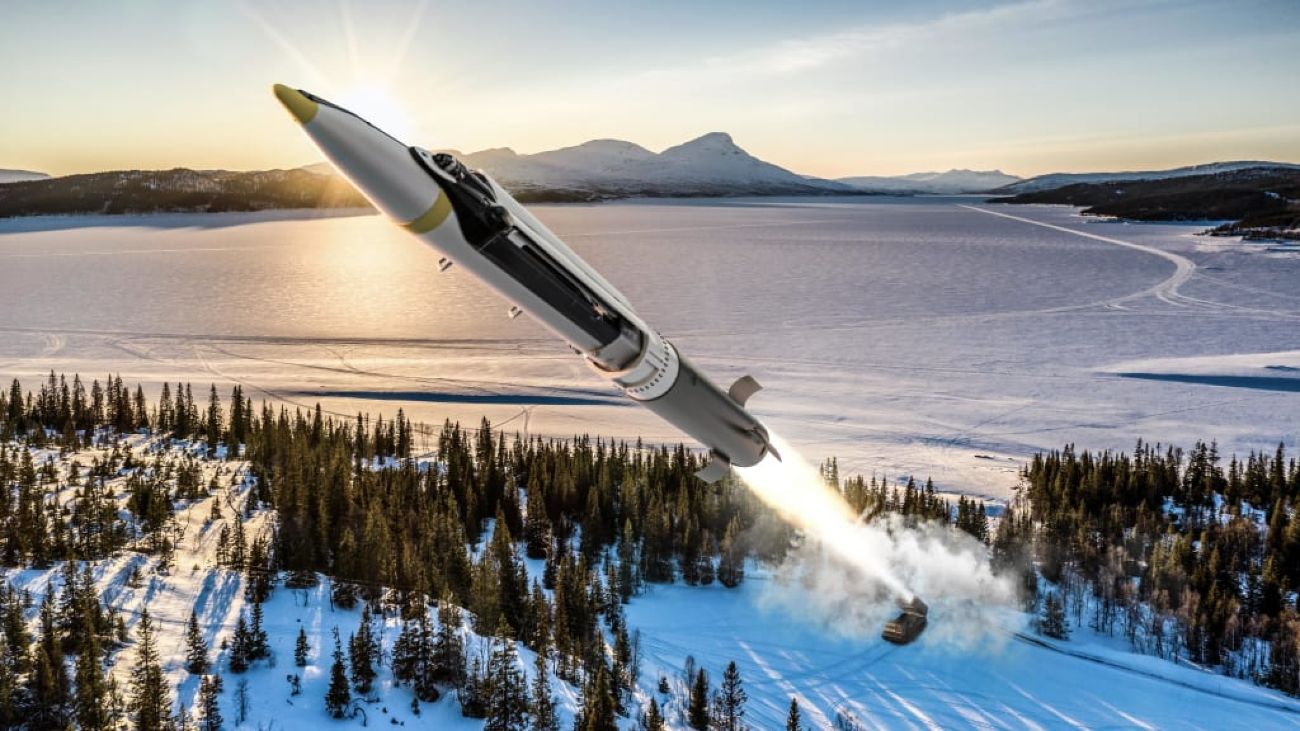After Ukraine attacked a crucial bridge in the Crimea region, there were speculations that the attack could have been carried out using the US-donated Ground Launched Small Diameter Bomb (GLSDB).
YOU MAY LIKE: Russia ‘Tears Into’ Su-24MR Airbase In Khmelnytskyi Region In Ukraine Over Storm Shadow Attack On Crimea
Ukrainian missiles destroyed one of the few bridges known as the ‘Chongar Bridge’ connecting the Crimean Peninsula with the Ukrainian mainland, cutting off one of the key supply lines for Russian forces in southern Ukraine.
In the aftermath of the attack, the Acting Governor of the Kherson region, Volodymyr Saldo, and head of Crimea, Sergey Aksyonov, said that according to the preliminary assessment conducted by the Russian authorities, the attack was carried out using the Storm Shadow missiles.
Subsequently, a video was also published by the state news agency RIA Novosti.
The strike on the bridge in Chongar was carried out by Storm Shadow missiles – the corresponding marking is on the wreckage of the rocket, RIA Novosti correspondent reports.#ZelenskyWarCriminal pic.twitter.com/bTdQl2EuYW
— Black Diamond (@blackdiammon) June 22, 2023
However, some military experts and pro-Ukrainian bloggers continued to believe that the attack could have been carried out using the US-donated GLSDB. Social media has since been flooded with speculations that the crater left by the munition used to strike the bridge was likely the result of a “GLSDB debut” instead of the Storm Shadow.
A popular pro-Ukrainian Twitter account that goes by the username @NOELreports posted a video with the caption, “Close up footage. This doesn’t look like Storm Shadow to me, as claimed by Russian channels.”
Close up footage. This doesn't look like Storm Shadow to me, as claimed by Russian channels. pic.twitter.com/hkgiYUqWrz
— NOELREPORTS 🇪🇺 🇺🇦 (@NOELreports) June 22, 2023
However, neither the United States nor Ukraine has confirmed that the GLSDB pledged by Washington earlier this year was operational in Ukraine.
A senior Pentagon officer Deputy Assistant Secretary of Defense for Russia, Ukraine, and Eurasia, Laura Cooper, said on June 22 that those weapons wouldn’t be operational until this fall. She was testifying before the House Committee on Foreign Affairs Subcommittee on Europe.
This is significant since despite pledging 31 M1A1 tanks for Ukraine in January this year alongside Germany’s decision to authorize the delivery of its Leopard-2s, the US Abrams will arrive in Ukraine only in the fall of this year. However, Leopard-2s were delivered in mid-April this year.
The GLSDB bombs are a relatively recent modification of the GBU-39/B Small Diameter Bombs (SDBs), first promised to Ukraine in February.
Although Ukraine has not officially acknowledged the use of GLSDBs yet, Russia claimed to have intercepted and shot down the Ground-Launched Small Diameter Bomb (GLSDB) in March this year, just over a month after the US promised the weapon in its military aid to Ukraine.
At the time, officials in Ukraine and military experts rejoiced about the decision since the bomb has a range of 150 kilometers, which is twice as much as that of the High Mobility Artillery Rocket Systems (HIMARS). A GPS satellite directs the GLSDB as it is launched on a rocket and glides toward its intended destination.

It can be fired from HIMARS and was anticipated to put all of Russia’s supply corridors in the east of the country and parts of Crimea within reach. Experts predicted that Russian forces would be exposed, forcing Moscow to transfer its supplies away from the front lines.
Sorry! No Cluster Munitions & ATACMS
When asked whether the United States would consider sending cluster munitions to Ukraine, Laura Cooper said while these weapons would be useful for Ukraine, the US had no immediate plans to send them across for a “host of reasons.”
Ukraine has been urging members of Congress to convince President Joe Biden’s administration to approve sending Dual-Purpose Conventional Improved Munitions (DPICM). However, several lawmakers and allies have expressed skepticism about their delivery due to the risk they pose to civilians.
Cluster munitions, which are prohibited in more than 120 nations, typically disperse into a large number of smaller bomblets that can kill people randomly over a large region, jeopardizing the lives of civilians.
“The reason why you have not seen a move forward in providing this capability relates to the existing congressional restrictions on the provision of DPICMs and concerns about allied unity,” Cooper added.
However, with the 150 kilometers-GLSDB pledged by the US earlier this year and other allies like the longer-range UK sending Storm Shadow missiles, pressure is also building on the US administration to send the 300 kilometer-range Army Tactical Missile System (ATACMS), which could massively aid the Ukrainian counteroffensive.
In the hearing that involved questions about the GSLDB and the cluster munitions, Cooper was also asked about plans to deliver the ATACMS, which can destroy fortified Russian targets.
Committee Chairman Tom Kean (R-NJ) asked Cooper whether the continuing refusal by the Biden administration “of these critical systems to Ukraine” was motivated by worries that Russia would view the action as “escalatory in nature.”
However, in an unexpected response, the Pentagon official said the denial was tied to “the practical aspects of availability” of the system.
EurAsian Times had earlier reported that momentum was building for the US to finally deliver Army Tactical Missile System (ATACMS) to Ukraine as the draft defense bill allocated $80 million to purchase the weapon for Kyiv’s military.
However, the report noted that the weapon won’t be sent from US military stocks. Therefore it will be at least a year before it reaches Ukraine, given the subsequent legal and logistical procedures. It will be ordered from the industry, whose production will take time.
Further justifying the decision, Cooper also emphasized other options as an alternative to the ATACMS available to Ukraine, the GLSDB being just one among them.
However, with the small-diameter bomb not operational until fall, the dilly-dallying on ATACMS becomes even more precarious for a country pushing against the Russians.
- Contact the author at sakshi.tiwari9555 (at) gmail.com
- Follow EurAsian Times on Google News